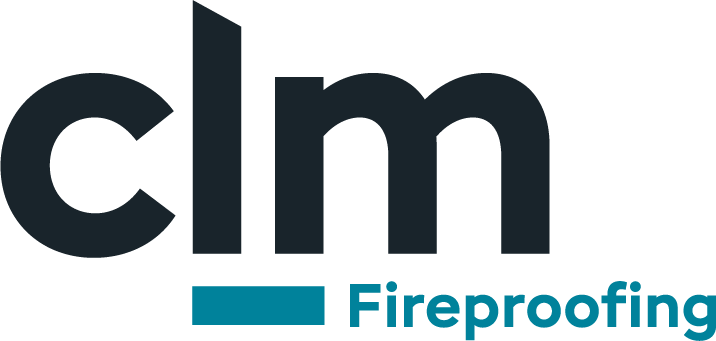Industry Leaders in Steel Fire Protection
All of our work is guided by a specialist knowledge of how steel is affected by fire damage. Depending on the severity of conditions, a structural fire can exceed temperatures of 800°C or higher. Temperatures of around 550°C will cause a decline in the load-bearing properties of structural steel. Unprotected steel frames can resist fire for approximately 15 minutes. Our team of installers offer a range of solutions to increase minimum periods of resistance, in line with industry fireproofing requirements for structural steel.
Contact our Expert Team

Protecting Buildings from Fire Damage
CLM Fireproofing has years of experience in bespoke structural protection for residential and commercial buildings, helping clients navigate the complex requirements of multi-storey structures. This includes knowing the unique risks of various building materials and structural elements such as steel beams, compartment walls, floor slabs or ceiling voids.
We also utilise an extensive network of suppliers, so we can procure the finest fireproofing materials and building products. We can recommend the best products for specific building elements, and advise on secondary requirements such as thermal insulation or soundproofing.

Intumescent Fireproofing for Steel
CLM Fireproofing uses various methods of intumescent fireproofing, including boards, spray-applied paint and thin film coatings, to protect steel from fire damage. Intumescent paint contains thermodynamic compounds which will expand into a solid, carbonaceous layer when subjected to temperatures of around 250°, creating a protective coating around steel beams and other structural elements. This then increases the structure’s fire resistance rating, which is usually either between 30, 60 and 90 mins. By reinforcing steel structures with intumescent coatings, we maximise the time taken by emergency responders to extinguish flames and evacuate buildings safely. Visit our dedicated page to learn more about intumescent paint.
When embarking on a project, we consider a variety of factors such as timescales, environmental conditions and basic functionalities such as acoustic insulation. We are also able to recommend intumescent coatings for projects where aesthetics are a priority, especially when steel is exposed to the general public. Our team has an established track record for delivering fireproofing projects on time, within budget and to unrivalled standards of quality.

Experts in Spray Fireproofing for Steel
We specialise in the application of spray-applied fireproofing, helping buildings withstand fire damage in compliance with the latest structural fire safety standards. Our spray fireproofing contractors and project managers engage with clients as early as possible so they can gain an in-depth understanding of each project’s unique requirements. This allows them to implement additional measures to enhance service delivery. For instance, we provide grit blasting services so that steel surfaces are readily prepared for a decorative finish.

Drylining and Boarding for Steel Beams
In construction projects, practical constraints can lead to intumescent paint being less of a viable solution. These include project timescales, weather conditions, and potential accessibility issues. In these scenarios, we can install fireproof boards to protect steel columns for up to 240 minutes and steel beams for up to 180 minutes. These boards are made of rigid mineral-based wood and can be attached to metal beams, columns, and decking.
Fireproof boards offer a range of benefits for a passive fire protection project. As a ‘dry trade’, they can be installed quickly with minimal impact on other ongoing activities. For instance, in comparison to spray-applied fireproofing it is not necessary to have any tarping or ventilation around the construction areas. This can reduce costs and help streamline overall project delivery. Find out more about our fire boarding services here.

Fully Compliant and Consistently Innovative
As a FIRAS-certified provider of advanced fireproofing systems, all of our specialists operate with the strictest adherence to the latest regulations. This means that from the initial design to project completion and handover, you can be assured that your building is 100% compliant with fire safety legislation and building codes. Our CEO, Clive Miles, has an established reputation as an industry expert and is a member of the Association for Specialist Fire Protection (ASFP).
All of our work will be tracked using BORIS, our compliance management technology platform, in conjunction with Building Information Modelling (BIM). A clear and concise audit trail gives clients confidence that their project is being handled by highly experienced and trained professionals. It also facilitates the exchange of information within the golden thread approach to building and construction management.
Frequently Asked Questions
How does fire affect the yield temperature of structural steel?
Structural steel can withstand approximately 425°C before it begins to soften. Between 600°C and 650°C, the steel will lose half of its strength and will pose a risk of failing (depending on the load it bears). Unsurprisingly, even a house fire will reach very high temperatures of around 600°C or just under. Of course, it depends on what the material being combusted is. A simple candle will often burn at 600°C or more, whilst propane can cause a fire to reach almost 2000°C.
How is the fire resistance of steel calculated?
Fire resistance is calculated using three main criteria, all of which are integral to limiting the risk of fire damage to a building. A structural element or product’s ‘fire resistance period’ is dependent on the time (measured in minutes) it takes for any of the below criteria to be compromised.
- Load-bearing capacity – whether or not the steel can support a required load without collapsing
- Integrity – the steel’s ability to prevent the passage of heat, flames and smoke
- Insulation – the steel’s capability to withstand exposure to rising temperature
What are the industry regulations for the fire resistance of steel?
Standards for the fire resistance of steel are set by two main pieces of legislation: Fire safety: Approved Document B, which is generally accepted as the main set of regulations for passive fire protection and BS 9999 which are the requirements set by the British Standards Institution for fire safety in the design, management and use of buildings.
Approved Document B provides a range of guidelines on minimum periods of structural fire resistance, primarily for multi-storey non-residential buildings:
- An office building that is up to 30m in height (and does not have a sprinkler system) has a minimum fire resistance period of 90 minutes
- A commercial building (such as a shop) that is up to 19m in above-ground height has a minimum fire resistance period of 60 minutes.
BS 9999 was published in 2008 and offers a more flexible and holistic approach to codes of practice in comparison to Approved Document B. This approach aims to accommodate as many factors as possible, no matter how small, such as the size of fire doors or new fire protection technologies like mist suppression systems. While BS 9999 is not meant to act as an oppositional approach to Approved Document B, it acknowledges that each building has a unique ‘risk profile’ based on occupancy, ventilation and an array of other circumstances.
While the above regulations do not mention steel directly in their specifications for fire resistance, they provide ample context for contractors, managers and site teams to decide on the most effective solution for structural steel fire protection.
What is the melting point of structural steel?
The lowest point at which carbon steel will melt is 1130°C, though 0% carbon steel won’t melt until 1492°C. Regardless of the type of steel, it will usually be completely liquid by approximately 1550°C.
What are the regulations for protecting steel structures from fire damage?
Buildings must be designed so that their stability can be maintained for a reasonable period in the case of a fire. Structural steel is a load-bearing component in most buildings. Therefore, complying with guidelines for structural steel is crucial for maintaining a building’s overall stability. For England, Scotland and Wales the main legislation is Requirement B3 in Approved Document B Fire Safety whereas for Northern Ireland it is Technical Booklet E, 2012.
Should I use water-based or solvent-based intumescent coatings?
Applying water-based intumescent paint for steel beams can be time-consuming due to the number of required coats and the total dry film build needed to provide adequate fire protection. What’s more, water-based intumescent paints also suffer from poor water resistance, which limits their application in indoor spaces and areas that require a waterproof topcoat. Conversely, solvent-based coatings are generally used on semi-exposed steel due to their ability to withstand various weather conditions. They also offer the added benefit of drying faster and leaving a smoother finish.
What’s the difference between thin film and thick film coatings?
As their name suggests, what differentiates thick film and thin film coatings is that thick film coatings are much denser. They also have a lower expansion rate, a ratio of around 5:1 compared to thin film coatings which expand at a rate of approximately 50:1. Thin film coatings are usually the industry standard as they are suitable for buildings where fire resistance regulations (specified by Approved Document B) are either 30, 60 or 90 mins. Conversely, thick film coatings are mostly used in industries that require working with extreme temperatures such as the petroleum industry. Finally, in comparison to their thinner counterparts, thick film coatings are often used in projects that require intumescent coatings to have a decorative finish.
Should intumescent coatings be applied on-site or off-site?
There are various benefits associated with applying intumescent coatings both on-site and off-site. For example, with on-site applications there is no need for large or complex spray equipment, and all the steel that needs to be coated is already erected and in place. Finally, on-site application is not a ‘wet-trade’, so construction activities are not delayed while waiting for access to floors.
In comparison, the off-site application of intumescent paint can save time in the construction schedule, as it means that trades do not have to spend days moving through floors and applying paint on-site. After the steel has been erected, there is a shorter window in which applicators are required to be on-site to resolve any damages or spray steel connections. Additional benefits include a reduced number of on-site trades, fewer delays in accessing work sites due to extraneous circumstances, and improved application productivity as time is not spent on moving equipment, personnel or products.

